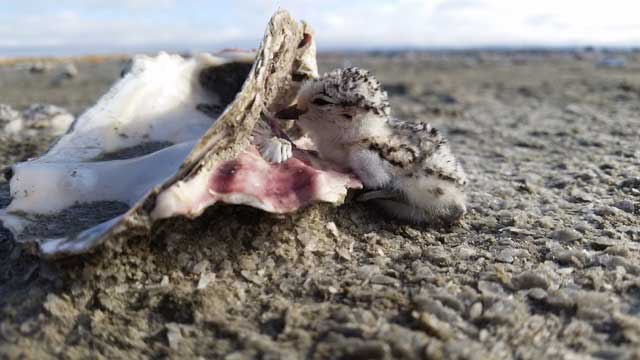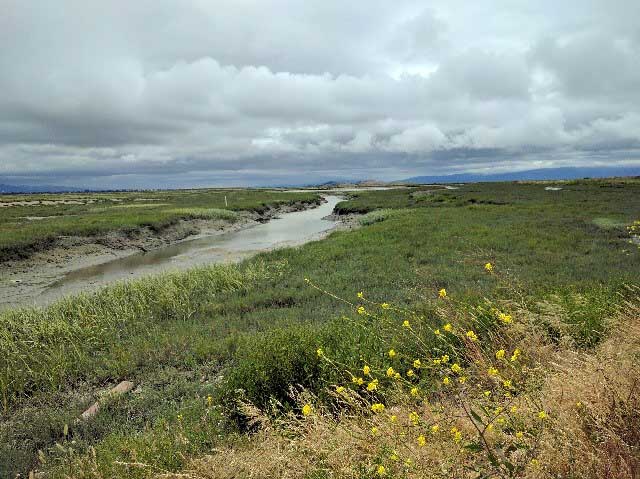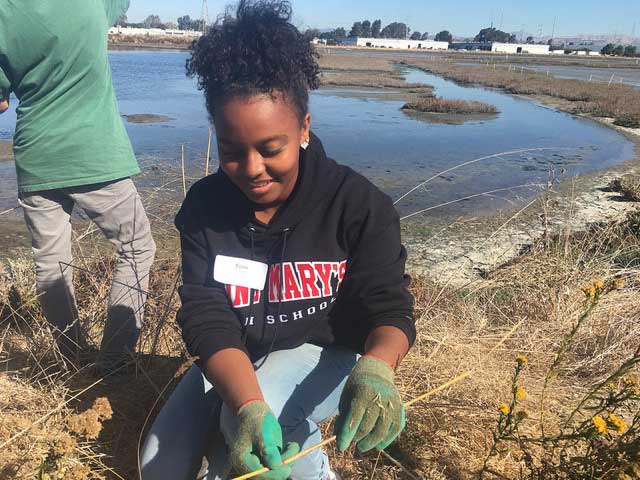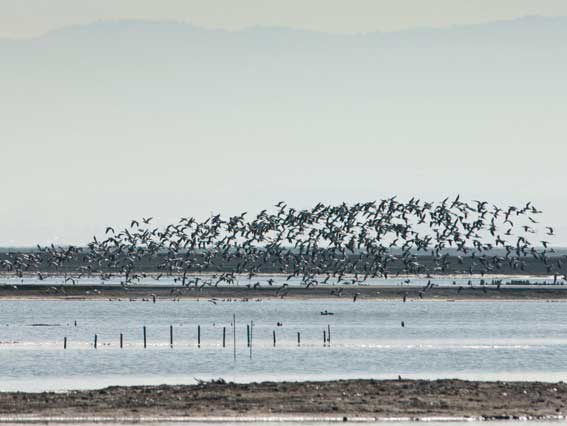Eden Landing Ecological Reserve Restoration Project
June 2017
Over the past 20 years, the California Department of Fish and Wildlife (CDFW), in conjunction with many other SFBJV partners, has transformed portions of a 6400-acre site in the Southeastern portion of the Bay known as the Eden Landing Reserve. As a result, hundreds of acres are now open to the Bay, ponds for birdlife have been enhanced, trails installed, trash removed, and invasive plants replaced with natives. Most recently, as part of the South Bay Salt Pond Restoration Project (SBSPRP), more public access has been provided, including a kayak launch and opportunities to view and learn about 19th Century saltworks.
The restoration of Eden Landing Ecological Reserve (ELER) has been underway since 1996, commemorated by the acquisition of the Baumberg Tract, and ultimately completed in 2008 with multiple benefits to wildlife and people. Approximately 135 acres of ponds were enhanced to provide habitat for Western Snowy Plover and other resident native waterbirds. Tidal action was also restored to nearly 700 acres in the North Creek and Mt. Eden Creek marsh restoration areas along with several miles of these creeks, which are the sloughs that connect these marshes to the Bay. Additionally, thousands of pounds of trash, debris and non-native plants were were replaced with native plants by volunteers which have successfully established along important upland transition areas. The Invasive Spartina Project also removed non-native cordgrass and its hybrids, and subsequently planted native cordgrass, gumplant and other natives. Finally, another 3.5 mile segment of the Bay Trail spine and a staging area and opened to the public in 2008.
In 2003, the California Department of Fish & Wildlife acquired an additional 5500 acres as part of the South Bay Salt Pond Restoration Project, expanding the site to approximately 6400 acres. The SBSPRP seeks to restore a minimum 50/50 ratio of managed ponds and tidal marsh habitat. Initial Stewardship Plan activities began in 2004 in the former salt ponds of the expanded ELER. Phase 1officially commenced in 2009, restoring 630 acres of tidal marsh habitat by 2011. Phase 1 also involved reconfiguring ponds E12 and E13, and completed in 2014.
These two ponds are the subject of adaptive management actions to inform future pond restoration and enhancement actions. In E12 and E13, an intricate system of inflow and outflow pipes have been installed to conduct a salinity experiment, wherein 3 paired cells will have similar water depths with salinities varying from ambient Bay (30ppt) to 4 times Baywater salinity (120ppt), with a mixing basin to ensure discharged pond water meets water quality objectives. Several nesting islands and roosting mounds have also been created at strategic locations in the reconfigured managed ponds, providing consistent depths and progressively higher salinity levels for shorebird and other waterbird foraging and roosting areas. Physical conditions and waterbird use were monitored over time to provide information that helped determine optimum waterbird use of managed ponds.
Many new public access features have also been implemented as part of the Baumberg Tract and SBSPRP at ELER. Nearly 4 additional miles of spur trails have been opened and are accessible from the Eden Landing Bay Trail Staging Area, as well as a kayak launch and several wildlife viewing areas. An annual program which provides controlled access for waterfowl hunting has also been implemented by CDFW.
Funding for this project was provided by: CDFW, Wildlife Conservation Board, State Coastal Conservancy, US Fish and Wildlife Service, National Oceanic and Atmospheric Administration, United States Geological Service, Alameda County, local municipalities, and private philanthropic foundations (Hewlett, Packard, Moore), Resource Legacy Fund, NGO’s and other project partners.
The project site is located in Hayward, along the east side of San Francisco Bay shoreline and adjacent to Union City, south of SR-92 and west of I-880.
Visit Eden Landing Ecological Reserve or the SBSPR Project for more information.





